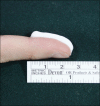Consensus Guidelines for the Treatment of Atopic Dermatitis in Korea (Part I): General Management and Topical Treatment
- PMID: 26512171
- PMCID: PMC4622891
- DOI: 10.5021/ad.2015.27.5.563
Consensus Guidelines for the Treatment of Atopic Dermatitis in Korea (Part I): General Management and Topical Treatment
Abstract
Background: Since the treatment guidelines for atopic dermatitis (AD) were released by the Korean Atopic Dermatitis Association (KADA) work group in 2006, there have been several advances in AD management.
Objective: We aimed to establish updated evidence- and experience-based treatment guidelines for Korean AD.
Methods: We collected a database of references from relevant systematic AD reviews and guidelines regarding general AD management such as bathing and skin care, avoidance of exacerbating factors, education and psychosocial support, and the use of moisturizers and topical anti-inflammatory and antipruritic drugs. Evidence for each statement was graded and the strength of the recommendation for each statement classified. Thirty-nine KADA council members participated in three rounds of voting to establish an expert consensus of recommendations.
Results: Basic AD treatment includes proper bathing and skin care, avoidance of exacerbating factors, proper education and psychosocial support, and use of moisturizers. The regular use of moisturizer has a steroid-sparing effect and reduces relapse episodes. The short- and long-term use of topical corticosteroids and calcineurin inhibitors improves AD symptoms and should be encouraged to use in an active and proactive treatment. Wet-wrap therapy can be used for rapid recovery of acute exacerbation. Topical antipruritic drugs cannot be recommended for the treatment of AD.
Conclusion: This report provides up-to-date evidence- and experience-based treatment guidelines for AD regarding general management and topical treatment. In addition, the average agreement scores obtained by a panel of experts based on the Korean healthcare system and patient adherence are presented.
Keywords: Administration; Guideline; Therapeutics; topical.
Conflict of interest statement
Figures

References
-
- Elias PM, Eichenfield LF, Fowler JF, Jr, Horowitz P, McLeod RP. Update on the structure and function of the skin barrier: atopic dermatitis as an exemplar of clinical implications. Semin Cutan Med Surg. 2013;32(2 Suppl 2):S21–S24. - PubMed
-
- Ring J, Alomar A, Bieber T, Deleuran M, Fink-Wagner A, Gelmetti C, et al. Guidelines for treatment of atopic eczema (atopic dermatitis) part I. J Eur Acad Dermatol Venereol. 2012;26:1045–1060. - PubMed
-
- Rubel D, Thirumoorthy T, Soebaryo RW, Weng SC, Gabriel TM, Villafuerte LL, et al. Consensus guidelines for the management of atopic dermatitis: an Asia-Pacific perspective. J Dermatol. 2013;40:160–171. - PubMed
LinkOut - more resources
Full Text Sources
Other Literature Sources

